I recently received an email from Steve Needy, who maintains the beautiful and recently-renovated Peabody Opera House in downtown St. Louis. During the renovation, many of the original (1932) LCN 206 concealed closers were rebuilt and reinstalled. Steve’s problem was that the spring power made some of the doors difficult for some visitors to open, particularly the restroom doors. Steve asked me how to adjust the closers or if that was even possible.
Well, 1932 was well before my time, so I attempted to hunt down the information through various channels. I checked with LCN of course, and was able to get some catalog information but no written installation/adjustment instructions. I emailed door closer expert Jess, who knew all about the LCN 206 and gave me the tip that it required a special adjustment wrench. I checked with Neil Scully at New England Door Closer, and he had a box of the adjusting wrenches! But alas, after speaking with the repair department at LCN and the shop foreman at NEDC, the adjustment wrench was for adjusting the general speed and latch speed, but not the spring power. I guess back in 1932 reduced opening force was not a big concern.
So what would you do? Existing concealed closers on a historically significant building where aesthetics are important…not an easy one to solve.
Here are some photos Steve sent to me, including the old closers, the adjusting wrench (thanks Neil!), and some of the Peabody Opera House doors (not all of them have the 1932 closers). Any ideas?
You need to login or register to bookmark/favorite this content.

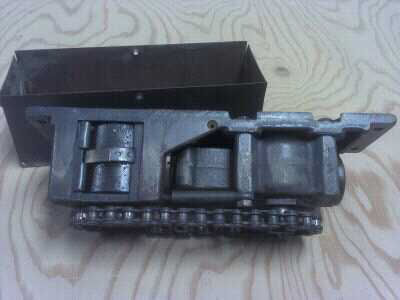
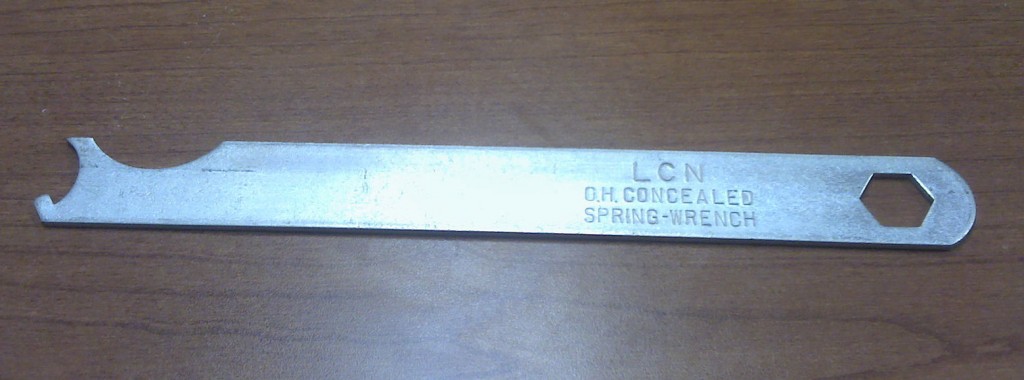

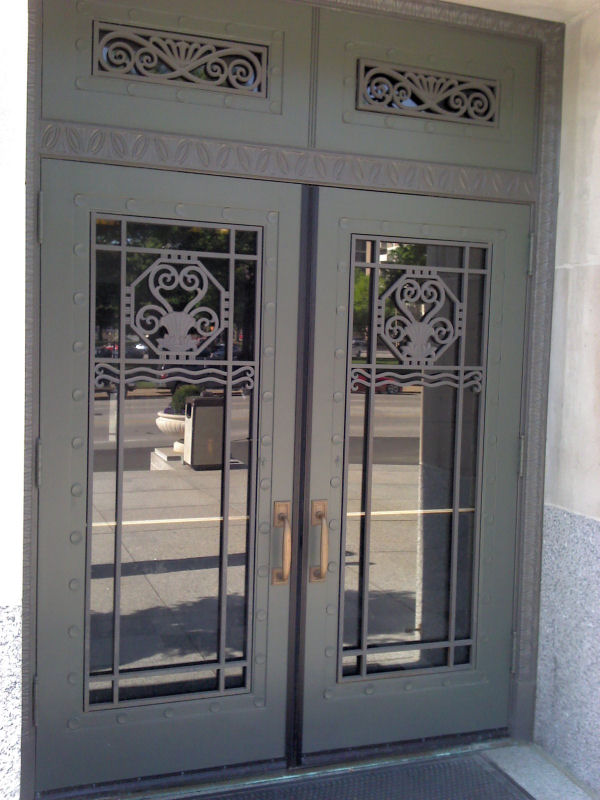

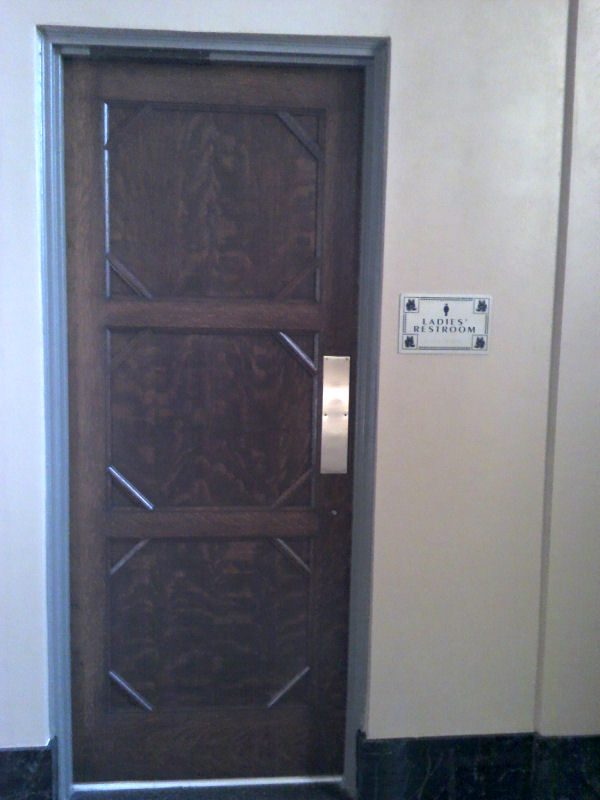
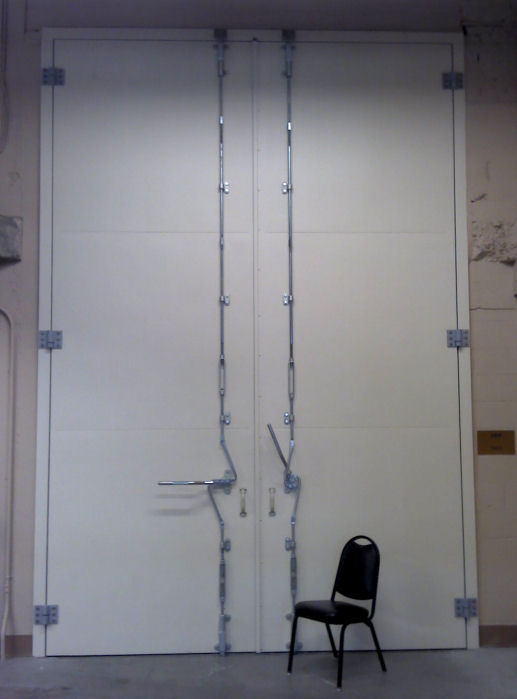
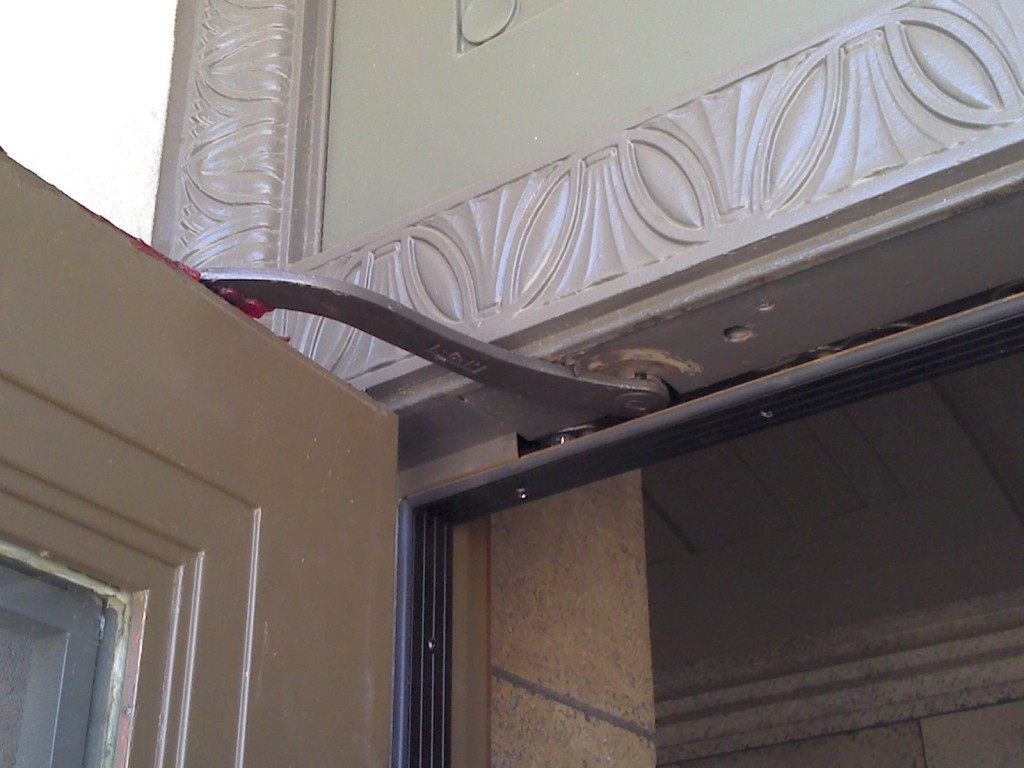





I am not overly familiar with this closer but in the picture it looks like it uses a black potbelly style spring cassette. Can this be swapped out for a lighter one? NE Door Closer may have them?
According to LCN and NEDC there was only one size back in 1932.
I like Jonathan’s thinking – perhaps there’s a local machinist who could either fabricate lighter spring cassettes or modify the rebuilt ones to require less pull strength.
1) Is It possible to rebuild the closer again using a lesser spring?
2) If it is on butts a reverse wind in a spring hinge can lighten a door a little bit.
3) could you mount a push and go pull side operator (not very pretty)
4) I notice it is a chain drive but not knowing how it mounts I would guess on some type of a sprockets, going down or up a few teeth on the sprockets will drastically change the mechanics of course this commonly requires altering the links on the chain which is easy if it has a master link is not take it to a bike shop.
5) See if you can modify the closer to mount a electric drive servo motor in the body.
Hmm…the reverse wind on a spring hinge is an interesting idea.
Did anyone ever take a physics class?
Looks like there is enough openings to warrant the expense of making new arms similar to LCN’s 2030-3077T, with bend on closer end, not track end.
Top of door and stop face will need to be modified so that the longer arm and track can be used.
Physics tells you that with a longer arm, it will require less force to open the door.
Difference would be like trying to push a door open from the middle, then pushing same door open from lock end. Much easier.
May have to custom make a couple of arms to test connection with closer to ensure both closing and latching speed engage when door is closing.
Problem solved!!!
Physics was my absolute worst subject, but I will ask LCN Engineering what they think.
My 2 cents, heat the spring while under tension, this would allow the spring to relax or cut the spring if possible. It would be like turning the closer into a LowRider. Its hit and miss I don’t know if it would work but I would be willing to geek on it awhile.
I appreciate your willingness to geek on this! Keep the ideas coming!
Lori, has Steve contacted the firm that rebuilt the closer bodies for advice? This cannot be the first time such a firm has had a similar complaint.
I would be hesitant about changing the geometry of the closer/arm/template without a THOROUGH review of factors involved… Additionally, have the openings themselves been investigated to be certain the doors are swinging freely?
I talked to LCN and it doesn’t sound like changing the arm geometry will help enough to overcome the spring strength. I’m not sure who rebuilt the closers but I talked to NEDC (they rebuild just about any closer) and it didn’t sound like there was a way to resolve the problem.
The openings are not the issue here. They are very nice.
Steve, I’m sure they are very nice. I don’t mean to imply otherwise.
My question related more to the butt hinges: I have been to many older facilities with a complaint similar to the one being discussed. A few steps back from the door, to see the whole picture, reveals that the hinge ball bearing races are worn completely through in places. This turns out the be the actual cause of the trouble, and thus the solution to the complaint. It is not, in fact, unheard of that the solution is to simply tighten the loose hinge screws…
In your opening statement, you said that ‘some of the doors’ were difficult to open. That suggests to me that there should either be some type of adjustment, or some of the springs are worn out. Either way, it might be possible to shift them around to get the ‘worn out’ springs on the restroom doors.
In any case, I don’t believe historical accuracy is paramount on this project. (just look at the photo of the jamb-up weatherstripping)
Of course, Daniel is right about the physics of a longer arm, but be aware that the channel where the arm disappears into the header will have to be lengthened, and the mounting location of the closer may also have to be moved. Any of these adjustments may also effect the degree of opening.
Go Rangers.
I think the problem is that with some doors it’s not such a big deal that they’re a bit tough to open, but the restrooms are an issue for the elderly and other who have trouble with the opening force.
The closers have been rebuilt. I believe it is the size and wieght difference of the doors themselves. Some doors are new and some are old. This is why We were looking for adjustments instead of inventing new closers.
Go Blues.
There are things that can be added such as weatherstripping, fire sprinkler systems, ADA regulation…which are welcome, HVAC, and updated plumbing to a building and still be historically accurate.
Go Blues. 🙂
I certainly agree with Steve about updated systems being acceptable in historical buildings. My comment about the weatherstripping was just my ‘left-handed’ way of suggesting new closers since other newer components have already been installed. (And that is only if there are no easy solutions to the vintage closer adjustment problem.)
Props to your Blues, but Go Texas Rangers.
Hello Lori,
i am glad i was somewhat of some help for this 206 LCN closer, about the adjusting, the wrench seems to be right for the closer, possible the hook part was too small for the ratchet (spring adjuster) near the closer’s arm, the hook size can be a problem if wrench is too small or too big in comparison to the spring adjuster on closer body.
this also applies to those hook wrenches that were supplied with traditional potbelly closers as well, the hook size IS A BIG DEAL when looking for the proper wrench, as not all brands used same size hook tool for springs.
there is a tool company called Williams USA, they make a universal hook spanner tool that can adjust multiple sized ratchets on closers or anything that uses notched adjusting (coil-over racing shocks for example)
about the chain type OHC, adjusting the spring on one of these requires you to do it with closer removed from the frame opening to adjust the chain for proper preload of the closer as noted to me from a canadian door closer rebuilder i know.
the chain just basically does is link the hydraulics to the spring, in a 206, the closer is made up of 2 separate parts, spring and hydraulic cylinder in a “box” and the box be mounted in frame, making up the 206 LCN OHC.
Daniel Ferry AHC: as for your idea about longer arms, in theory yes, that would enable a person to take advantage of leverage and be strong enough to push or pull the door open making the spring “weaker” but as Lori said, the length of arm being longer would be too long for the track that’s in the top edge of the door. the only way this would be possible is if they used an unequal pair (one door wider then the other) or just widen the doorway and reinstall with wider doors (if wanting both doors be using a longer arm) in a restoration especially with vintage doors, a modification will really help the ADA for width, but will yes, look a bit “out of place” or strange for the period the building is constructed in.
as for relocating the closer body, this is a steel frame door and doing that is not as easy as it sounds, due to the location of the mounts on the other end of the closer that faces the latch side of the door, relocating is easier with a wood frame due to being able to fill it in with scrap wood, alot of modifications would have to be done to a metal frame and even then, would the frame pass the fire codes?? those are some things you have to think about when getting into relocating the body of a OHC closer to make spring easier.
(sorry if that was alot of physics rich content there about OHC closers, but physics is important in many applications with these, and even surface closers.
as for contacting LCN design dept about these, most of these (as well as the potbelly closers) also are waaaaaay before the time of oldest or the geekiest person in closers at the factory, although the current OHC may operate the same (but not look like the 206) arms, tools and springs have changed through the years between 1930’s to now (2012) if there was anyone there that knew about these, the person has most likely been retired from working at LCN (economy).
Lori: as for physics, that was one of my favorite courses in high school, and was easy as heck for me to understand,(we mostly discussed electromagnets and magnetism/metals, and yes, my closer did come in handy for showing metals that are magnetic and not)
not only that, but i used A DOOR CLOSER to write with to make my handwriting easier for me to do and for others to read what i wrote without hogging the room computer or having to rely on batteries or a wall outlet or the printer to do my classwork
the closer i took to school was a Norton 1600 series used during last 6 weeks of high school in 12th grade.
Lori: possible if Steve is still in a bind with this (or 206’s in general) i could help him with this and supply more detailed instruction if needed on getting the springs adjusted on these??
-Jess the door closer doctor
Jess, I am interested in adjusting the springs. You are welcome to e-mail me…sounds interestng.
Steve Needy: check your email, I hope my advice in the email helps understand how its adjusted and is not a big problem,
Lori: i sent you an email about this as well, basically explaining how the 206 works and WHY the 206 is a sized closer.
as for music, i like blues, vintage country and the oldies, i am pretty sure many oldies music legions have played at Peabody opera house in the past.
don’t think I’m strange, but who says 27 is too young for oldies and vintage country, 😀
-Jess the door closer doctor
Hi Lori
Check with these guys, maybe they know something.
http://www.portlanddoorcontrols.com/rebuilt_closers.html#2
Darren Patton’s idea to torch the spring will work to take some of the strength out of it.
But do not cut it! That would increase the spring rate, achieving the opposite effect.
Would an LCN 2010 fit in the same frame/door prep?
Hi Casey –
I don’t think the 2010 will fit into the current prep.
I believe I may have the tool for this but this post is going on 2 years ago now,, any tools I come across, I pick up,, I do my own repairs, refinish and refurbish, as well as a wood carver,,,so, like I said, I pick up stray tools,, it is almost 9 1/4″, has a wrench style opening of almost 2″,,there are 4 gradient sized hexagon openings in the handle as well as 2 smaller square openings,,it is heavy duty and has L.C.N. stamped into the handle